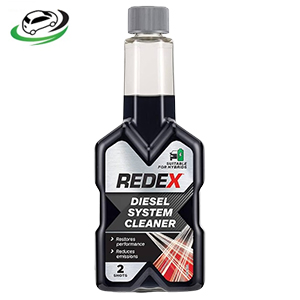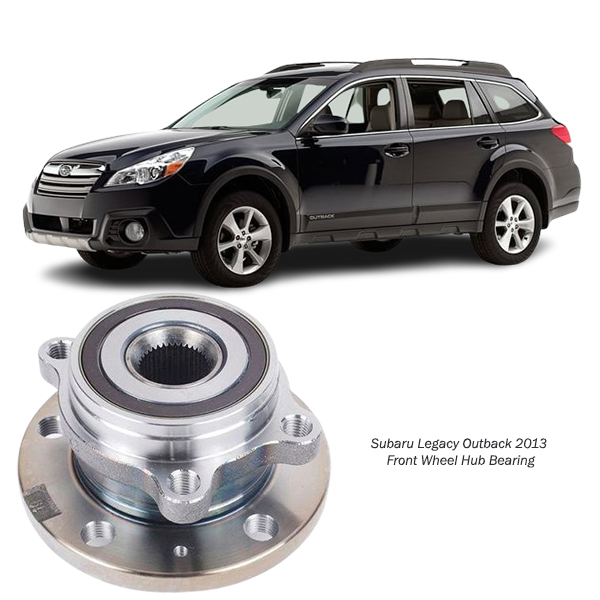-7%
Get Subaru Legacy Outback 2013 Front Wheel Hub Bearing 28373-FG000 in Kenya
The front wheel hub bearing is an essential component in a vehicle’s wheel assembly. This part plays a critical role in supporting the wheel rotation, ensuring a smooth and stable ride, and enhancing overall vehicle performance. Located between the wheel and axle, the hub bearing sustains the weight of the vehicle, absorbs impacts, and reduces friction as the wheel spins. Let’s dive into a detailed exploration of its function, types, construction, symptoms of wear, maintenance practices, and replacement considerations.
1. Purpose and Function of a Front Wheel Hub Bearing
The primary purpose of the front wheel hub bearing is to allow the wheel to rotate freely with minimal friction while supporting the vehicle’s weight. The bearing assembly facilitates smooth, reliable rotation by keeping the wheel in a fixed position relative to the axle. This stability not only allows for controlled movement but also enables the vehicle to handle sharp turns, sudden stops, and varying road surfaces safely.
Key functions of a front wheel hub bearing include:
- Reducing Friction: By allowing the wheel to spin smoothly with minimal resistance, the bearing reduces friction that would otherwise wear out the wheel components quickly.
- Providing Stability: The hub bearing keeps the wheel aligned with the axle, enabling steady handling and helping prevent vibrations.
- Absorbing Load: The hub bearing supports the weight of the vehicle and distributes the load during acceleration, braking, and cornering.
- Enhancing Safety: A properly functioning hub bearing ensures that the wheel remains stable and secured to the vehicle, preventing wheel detachments and reducing the risk of accidents.
2. Construction and Components of a Wheel Hub Bearing Assembly
A front wheel hub bearing is typically a sealed unit that combines several components into one assembly. It may consist of:
- Bearings: Ball bearings or roller bearings that allow smooth rotation with minimal friction.
- Raceways: Inner and outer raceways where the bearings move; these raceways form the primary bearing surface.
- Hub: The hub or housing keeps the bearing components aligned and secures them to the wheel assembly.
- Seal: Modern hub bearings are usually sealed to prevent dust, water, and debris from entering and to retain lubrication within the bearing.
The assembly’s robust design allows it to handle heavy loads, absorb shocks from the road, and withstand varying temperatures, which helps prolong its lifespan. However, over time, even a sealed bearing can wear out due to normal use, road conditions, and environmental factors.
3. Types of Front Wheel Hub Bearings
There are several types of front wheel hub bearings, each suited for different vehicle requirements:
- Ball Bearings: These are the most common type used in automotive applications. Ball bearings offer low friction, making them suitable for high-speed applications, but they may not handle heavy loads as efficiently as roller bearings.
- Roller Bearings: Roller bearings can handle heavier loads than ball bearings. They consist of cylindrical rollers instead of balls, which distribute weight more evenly. They are often used in larger, heavier vehicles.
- Tapered Roller Bearings: Found in heavier-duty applications, these bearings have a conical design that allows them to handle both radial and axial loads, making them ideal for front wheel hub assemblies that experience lateral forces from steering.
- Integral or Non-Integral Hub Bearings: In some cases, the wheel hub bearing is designed as an integral unit (non-serviceable), which means it must be replaced as a whole. Non-integral hub bearings can be disassembled, and only the worn bearing needs replacement, while the hub remains in place.
4. Common Signs of a Worn-Out Front Wheel Hub Bearing
A failing front wheel hub bearing can lead to several noticeable symptoms, each affecting the vehicle’s safety and performance:
- Grinding or Humming Noise: A common sign of a failing hub bearing is a grinding or humming noise coming from the wheel area, especially when turning. This noise results from the bearings’ increased friction as they wear down.
- Vibrations in the Steering Wheel: A worn-out hub bearing may cause vibrations that are felt in the steering wheel, particularly at higher speeds. This is due to the misalignment or looseness in the wheel assembly.
- Wheel Wobble: A failing bearing can lead to excessive wheel play, causing the wheel to wobble or feel loose, which can be hazardous.
- Uneven Tire Wear: Damaged or worn bearings can cause misalignment, leading to uneven tire wear and reduced tire lifespan.
- Increased Brake Pedal Play: Some symptoms of bearing wear can appear as increased play or looseness in the brake pedal. A worn bearing may affect the braking system due to wheel instability.
If any of these symptoms are observed, it is essential to have the wheel bearing inspected and replaced as needed to ensure continued safe vehicle operation.
5. Causes of Front Wheel Hub Bearing Wear and Failure
While wheel hub bearings are designed for durability, several factors can contribute to their premature wear or failure:
- Harsh Driving Conditions: Driving over potholes, rough terrain, or uneven surfaces can place excessive strain on the bearings, causing wear.
- Improper Installation: Incorrect installation procedures, such as over-torquing the bearing or improper alignment, can damage the bearing.
- Contamination: Dust, water, or debris entering the bearing can disrupt lubrication and lead to increased friction and wear.
- Overloading: Carrying excessive weight beyond the vehicle’s limit can stress the bearings, causing them to fail prematurely.
- Low-Quality Bearings: Inferior bearings may lack the durability needed for long-lasting performance.
6. Maintenance Tips for Front Wheel Hub Bearings
To ensure longevity and optimal performance of wheel hub bearings, consider the following maintenance tips:
- Regular Inspections: Periodically check the wheel bearings for signs of wear, especially during routine maintenance.
- Avoid Overloading: Respect the vehicle’s weight limits to prevent excessive strain on the bearings.
- Keep Bearings Sealed: While most hub bearings are sealed, inspect for leaks or damage to the seal. If contaminants enter the bearing, it can lead to premature wear.
- Check for Vibration and Noise: At the first sign of unusual noise or vibration, have the bearings inspected to catch potential issues early.
7. Replacement Process for a Front Wheel Hub Bearing
Replacing a front wheel hub bearing is often complex and may require specialized tools, making it a task best left to professional mechanics. Here is a general overview of the replacement process:
- Raise and Secure the Vehicle: The vehicle should be lifted securely to provide access to the wheel.
- Remove the Wheel and Brake Assembly: To access the hub bearing, the wheel and brake components, such as the caliper and rotor, are removed.
- Detach the Hub Bearing Assembly: The hub bearing is removed from the steering knuckle, sometimes requiring a bearing puller if it’s seized.
- Install the New Bearing: The new bearing assembly is carefully aligned and installed, ensuring proper torque specifications.
- Reassemble Components: Once the bearing is installed, the brake components and wheel are reattached.
- Test the Vehicle: A final road test ensures proper installation and checks for any remaining issues.
8. Choosing the Right Front Wheel Hub Bearing
Selecting the correct replacement hub bearing is essential for compatibility and longevity:
- Quality: Choose reputable brands that meet Original Equipment Manufacturer (OEM) standards to ensure durability.
- Compatibility: Ensure the bearing matches your vehicle’s make, model, and year.
- Type: Depending on the driving conditions and vehicle type, opt for a bearing type that can handle the expected load and performance requirements.
9. Cost Considerations and Longevity
The cost of a front wheel hub bearing replacement varies based on the vehicle type, bearing quality, and labor rates. Typically, wheel hub bearings can last anywhere from 85,000 to 100,000 miles, although their lifespan may be shorter in rough driving conditions. Investing in high-quality bearings and ensuring proper installation can improve their durability.
10. Conclusion
The front wheel hub bearing is integral to the performance, safety, and stability of any vehicle. By reducing friction, supporting weight, and maintaining wheel alignment, it enables a smooth and efficient ride. Regular inspections, recognizing the symptoms of wear, and using quality replacement parts are essential steps to maximize bearing lifespan and prevent premature failure.
Follow us on Facebook for more parts.



